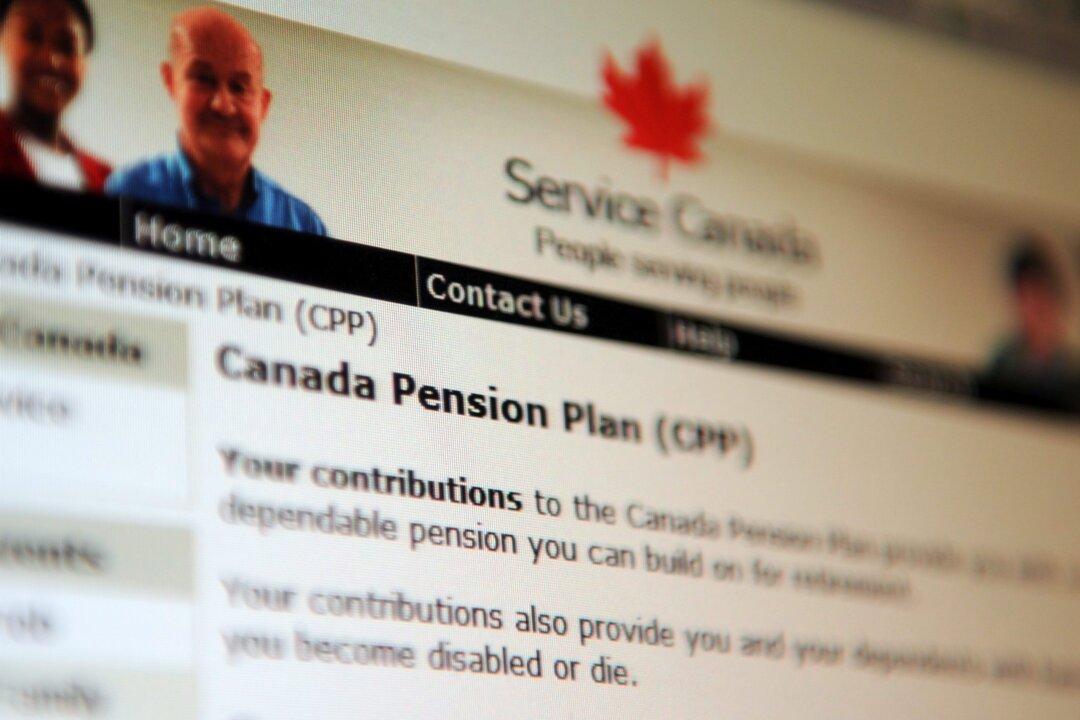Canada’s government acknowledges that the significant investments they seek in Canadian businesses and infrastructure must come mostly from the private sector. But in fact for decades, the country’s pension funds have been considerably reducing their domestic investments, a trend the feds and regulation are being taken to task for.
Tony Loffreda, independent senator from Quebec and former vice chairman of RBC Wealth Management, on May 12 asked the government’s representative in the Senate, Marc Gold, what the feds could do to incentivize Canada’s pension funds to invest more in Canada “without necessarily regulating free enterprise.”
“If pension funds were to inject billions of dollars into our Canadian companies at a greater rate, it would have the potential of increasing productivity and growth, accelerating innovation and technology, fuelling competition, and attracting further investments—and perhaps more importantly—help raise the standard of living Canadians,” Loffreda said during question period.
Gold’s response to Loffreda specifically referred to the Canada Pension Plan Investment Board (CPPIB)—which manages Canada’s largest pension fund, with $550.4 billion in assets as of Dec. 31, 2021—as an independent body that makes its own decisions.
“The CPPIB operates at arm’s length from both federal and provincial governments,” he said.
The CPPIB’s 2021 annual report showed that in 2006, 64 percent of its assets were invested in Canada and the remaining 36 percent invested globally. But by 2021, the mix had changed to 15.7 percent in Canada and 84.3 percent globally.
According to the CPPIB’s 2021 annual report, the weighting of Canadian equities in its portfolio is effectively determined by a global equity index, and “because we do not make a separate allocation to Canadian equities, … As of March 31, 2021, this weighting was approximately 2.8 percent.”
The CPPIB added that the actual percentage allocated to Canadian equities will likely be higher due to the advantage of having greater knowledge of and access to its home country.
Loffreda emphasized that “I really think the government needs to properly assess the situation, find out why Canadian pension funds are reluctant to invest, and what winning policies can be implemented, while respecting the idea of free markets.”
Downward Trend
In a report published in April, global investment firm LetkoBrosseau and Associates Inc. elaborated on Canadian pension funds’ allocation to Canadian public equities that had declined from close to 80 percent in 1990 to barely 10 percent by 2020.
Canadian equities represent about 3–4 percent of the world’s equity markets.
“Americans invest 75 percent in their own economy, should Canadians make do with 3 percent and leave it to others to forge their future or should they also invest 75 percent in Canada?” stated the LetkoBrosseau report.
The firm, which has over 30 years’ experience managing pension assets, pointed to some of the pitfalls of investing internationally, such as currency fluctuations, taxation, and political and legal risks.
The report outlined some of the reasons for the trend, singling out regulation.
“Plan sponsors are reacting in very predictable ways to their regulatory environment and the only way to change this behaviour is to change the environment,” LetkoBrosseau said.
It said regulation has over-emphasized short-term fluctuations in asset values, resulting in a shorter investment time horizon for pension fund assets. In contrast, pension savings, which represent 30 percent of Canadian savings, are typically invested for the long term and are meant to be managed such that they can take more risk to earn greater rewards.





